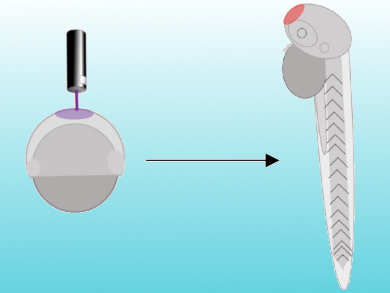Cell-lineage tracing is used, e.g., to study embryo development, stem‐cell differentiation, or tumors. The enzyme Cre recombinase is one tool for labeling and tracking cells. However, it can usually only be used when and where DNA recombination takes place.
Alexander Deiters and colleagues, University of Pittsburgh, PA, USA, have developed an optically triggered, photocaged Cre recombinase in zebrafish embryos with an expanded genetic code. The photocaged Cre recombinase allows the control of DNA recombination using 405 nm irradiation. No background activity is seen before irradiation, and after light‐triggered removal of the caging group, Cre recombinase activity is restored.
The system permanently labels progeny cells due to modification of the parent cells’ genome with fluorescent reporter proteins. The team demonstrated its use through cell-lineage tracing experiments of multiple tissues during early embryo development. Future applications could involve the use of this tool to help understand cell heterogeneity in developing organs or tumors.
- Cell-Lineage Tracing in Zebrafish Embryos with an Expanded Genetic Code,
Wes Brown, Jihe Liu, Michael Tsang, Alexander Deiters,
ChemBioChem 2018.
https://doi.org/10.1002/cbic.201800040




